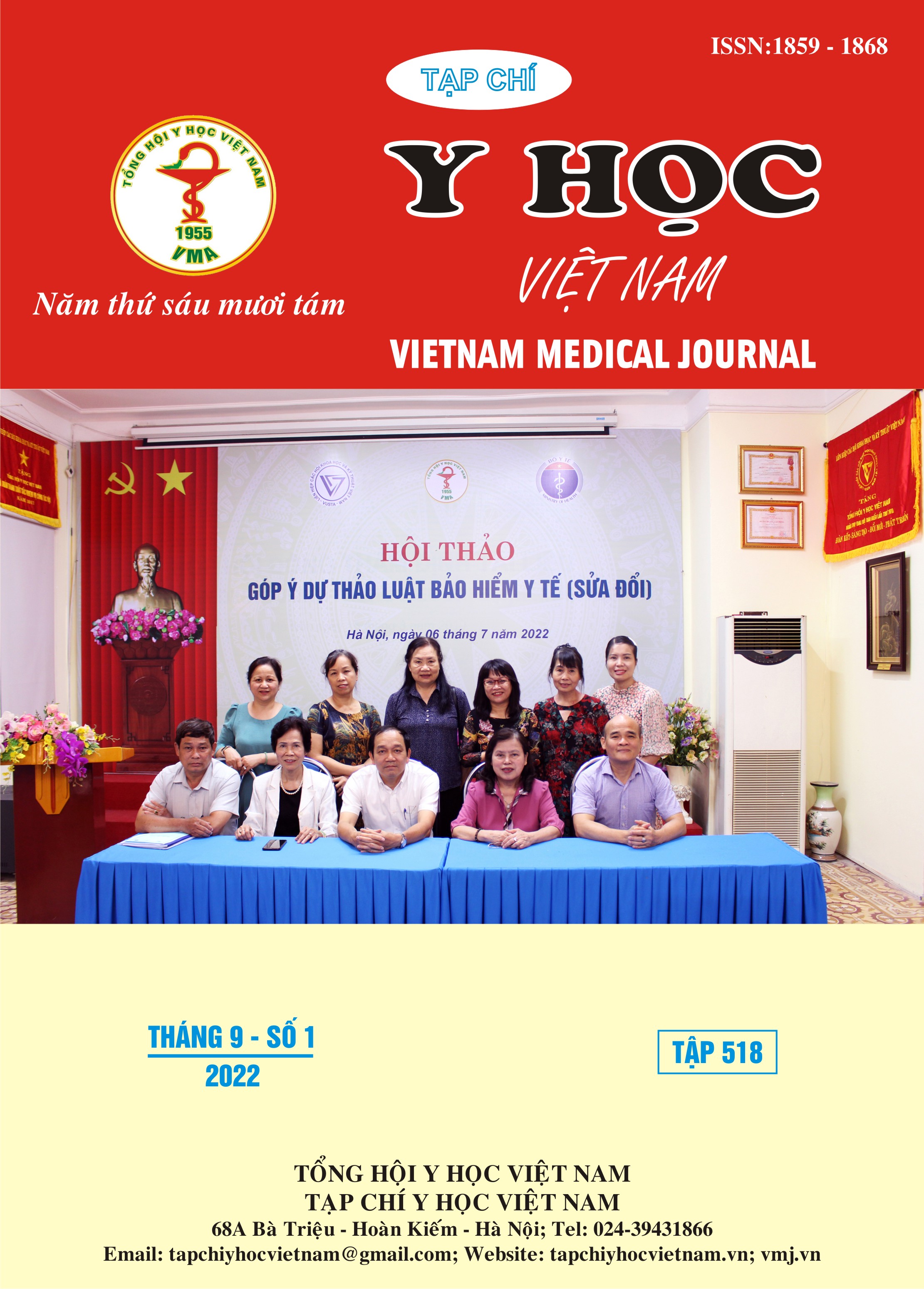COMPARISON OF LAMP TECHNIQUE WITH ISOLATION CULTURING PROCEDURE FOR TYPE A, B ISOLATION OF CLOSTRIDIUM BOTULINUM GENES IN FOOD SAMPLES AND CLINICAL DISEASES
Main Article Content
Abstract
Objectives: The study compares the LAMP technique with the culture technique to detect type A and B toxin genes of Clostridium botulinum (C. botulinum). Subjects and research methods: Experimental study in the laboratory tested on 90 food samples and clinical specimens. Results: Use the results of the isolation culture to detect the toxin gene as a standard for comparison with the LAMP procedure. The study results showed that the number of samples showing positive results when performing the LAMP procedure to detect type A and B toxin genes of C. botulinum bacteria was 12/90 (13,3%) while the stool culture procedure The established toxin gene was 11/90 (12,2%). The sensitivity, specificity, and accuracy (accuracy) of the LAMP procedure to detect the type A and B toxin genes of C. botulinum were 91.6%, 100%, and 98,8%, respectively. Besides, the false-positive rate was 8,33%, the false-negative rate was 0%, especially the kappa coefficient was 0,986, showing an almost complete consensus between the two procedures. In addition, the LAMP technique shows many advantages such as faster implementation time, more cost savings, easier to implement, and can be deployed in all laboratories from small to large to detect type toxins. A, B of C. botulinum bacteria in food as well as clinical samples.
Article Details
Keywords
Botulinum toxin, Clostridium botulinum, LAMP, Meat poisoning
References
2. Tăng Thị Nga, Vũ Thị Mai Hiền, Đặng Đức Anh, Phạm Bảo Yên, Nguyên Thị Hương Giang, Đoàn Thu Trà, Nguyễn Trung Nguyên, Vũ Duy Nhàn, và Nguyên Thùy Trâm (2021), Phát hiện Clostridium botulinum trong mật ong, đất và thực phẩm đóng hộp tự chế biến ở một số tỉnh miền Bắc Việt Nam năm 2019-2020, Tạp chí Y học Dự phòng, số 31(2), tr. 35-41.
3. Petr Čapek và Tobin J Dickerson (2010), Sensing the deadliest toxin: technologies for botulinum neurotoxin detection, Toxins, số 2(1), tr. 24-53.
4. Andreja Rajkovic, Benaissa El Moualij, Youssef Fikri, Katelijne Dierick, Willy Zorzi, Ernst Heinen, Ahu Uner, và Mieke Uyttendaele (2012), Detection of Clostridium botulinum neurotoxins A and B in milk by ELISA and immuno-PCR at higher sensitivity than mouse bio-assay, Food Analytical Methods, số 5(3), tr. 319-326.
5. Susana M Vieira, Uzay Kaymak, và João MC Sousa. Cohen's kappa coefficient as a performance measure for feature selection. in International Conference on Fuzzy Systems. 2010. IEEE.
6. Miia Lindström, Riikka Keto, Annukka Markkula, Mari Nevas, Sebastian Hielm, và Hannu Korkeala (2001), Multiplex PCR assay for detection and identification of Clostridium botulinum types A, B, E, and F in food and fecal material, Applied and environmental microbiology, số 67(12), tr. 5694-5699.
7. Tsugunori Notomi, Hiroto Okayama, Harumi Masubuchi, Toshihiro Yonekawa, Keiko Watanabe, Nobuyuki Amino, và Tetsu Hase (2000), Loop-mediated isothermal amplification of DNA, Nucleic acids research, số 28(12), tr. e63-e63.
8. T Sakuma, Y Kurosaki, Y Fujinami, T Takizawa, và J Yasuda (2009), Rapid and simple detection of Clostridium botulinum types A and B by loop‐mediated isothermal amplification, Journal of applied microbiology, số 106(4), tr. 1252-1259.


